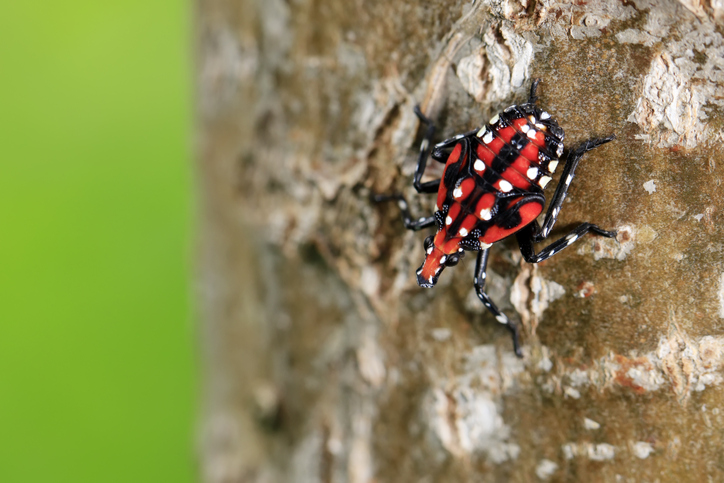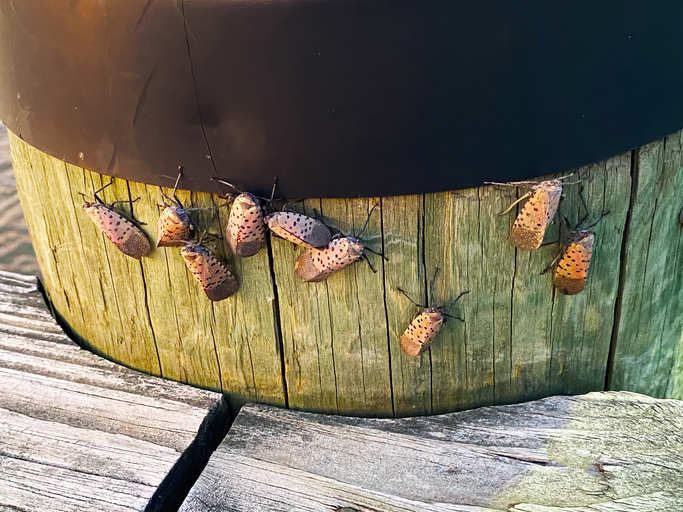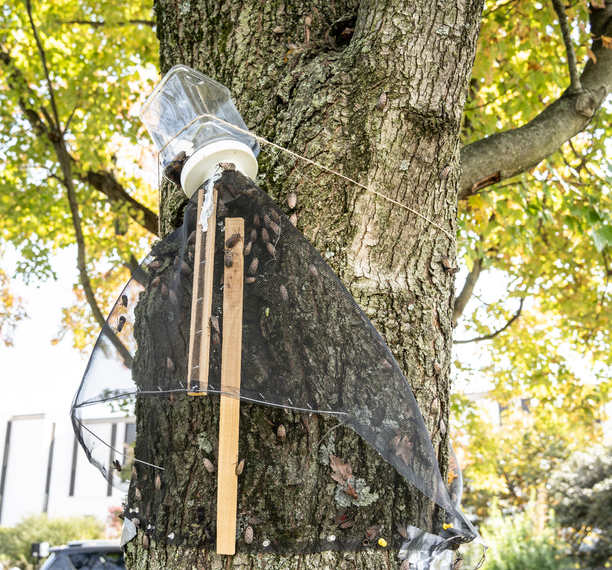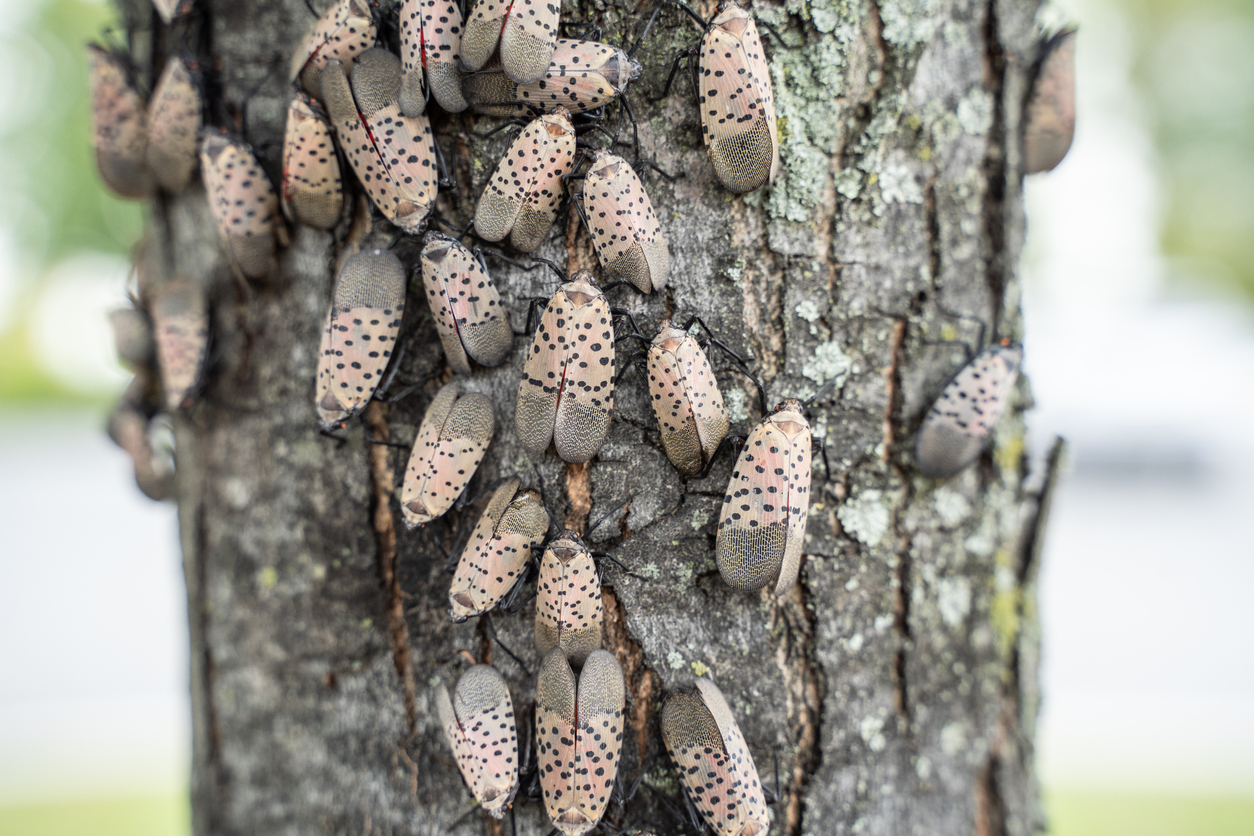Have you noticed Spotted Lanternflies on your flowers, shrubs, and trees? While cute and generally harmless to people and pets, they can cause havoc to your yard’s beloved plants and trees. Taking the proper steps to prepare for the Spotted Lanternfly is beneficial in preventing a full infestation.
Home gardeners have reported Spotted Lanternfly nymphs feeding on soft plant tissue like cucumbers, basil, roses, peonies, Russian sage, grapevines, and many more sweet-nectar plants. In some cases, damage to these plants has occurred. However, they feed upon soft-tissue plants for only a short period; their mouthparts will become strong enough to feed upon larger shrubs and trees as they grow.

Don’t assume that the Spotted Lanternfly causes all plant damage you see.
Other factors can cause plant health decline, including other insects, diseases, and weather conditions.

The Spotted Lanternfly progresses through four stages before becoming an adult. The first three stages are black-bodied with white spots, and just before adulthood, they become red with black stripes and white spots. These pests are quick and can hop extremely high for their small size. Interestingly enough, the Spotted Lanternfly often goes unnoticed by homeowners until they reach adulthood in mid-summer.
Remove Egg Masses
Currently, there are no known natural enemies of Spotted Lanternflies that could help reduce the population. Their egg masses have a thick protective layer that protects the eggs throughout winter’s freezing temperatures so that they will hatch in the spring.
When first laid, the protective layer resembles bird droppings, and then as it dries, it turns a dull gray color. Spotted Lanternflies are not discriminatory about where they lay their egg masses; check your patio furniture, children’s playsets, cars, grills, RVs, mailbox, and trees. Homeowners can remove egg masses by scraping them into a container or zipper bag that contains rubbing alcohol or hand sanitizer and seals tightly.


What Is Honeydew?
Adult Spotted Lanternflies feed on sap using their piercing-sucking mouthparts. The sweeter the sap, the more they like it! Their liquid waste produced from sap is called “Honeydew,” which often falls from trees, resembling a light rain.
Honeydew is attractive to ants, wasps, bees, and other sugar-loving insects. As the honeydew accumulates, it often colonizes into black Sooty Mold. Sooty Mold does not directly harm plants or the surfaces on which it grows, but it physically blocks leaves, reducing photosynthesis. It can also stain objects such as tree trunks, decks, patios, and vehicles underneath affected trees. These stains can be very difficult to remove.
Reduce The Population
If you find Spotted Lanternflies on your property, you can use traps to reduce infestation on your plants and trees possibly. They typically crawl upwards from the trunk base to feed higher up, and the traps may intercept them. The recommended trap is a funnel-style trap called a “circle trap.”
Some homeowners will use “sticky bands,” which capture the Spotted Lanternflies as they move up the tree. We do not recommend sticky bands because this material is not selective and can catch beneficial insects or animals, including pollinators, butterflies, birds, squirrels, and more. Never use sticky bands without a wildlife barrier if you choose this remedy.


Contact and Systemic Options
There are methods available to reduce the infestation of these pests, either on contact or systemically. Contact insecticides kill the insect when it makes contact with the Spotted Lanternfly. Systemic treatments are sprayed on the tree’s trunk, absorbed through the bark, disperse naturally throughout the tree, and kills the insect when the treated sap is ingested.
Homeowners should consider hiring a Certified Pesticide Applicator to advise them on the best method for their specific situation. Professional applicators have specialized training, licensing, and equipment to safely perform these treatments and have found that combining both ways can be successful when treating highly infested areas.
Here at Tomlinson Bomberger, our Spotted Lanternfly Management Program’s primary goal is to lower the population of this pest as much as possible. We want to improve your time spent outdoors so you can enjoy your family and landscape!
Do you want to learn more about our program or have any questions regarding the treatments for Spotted Lanternfly?

